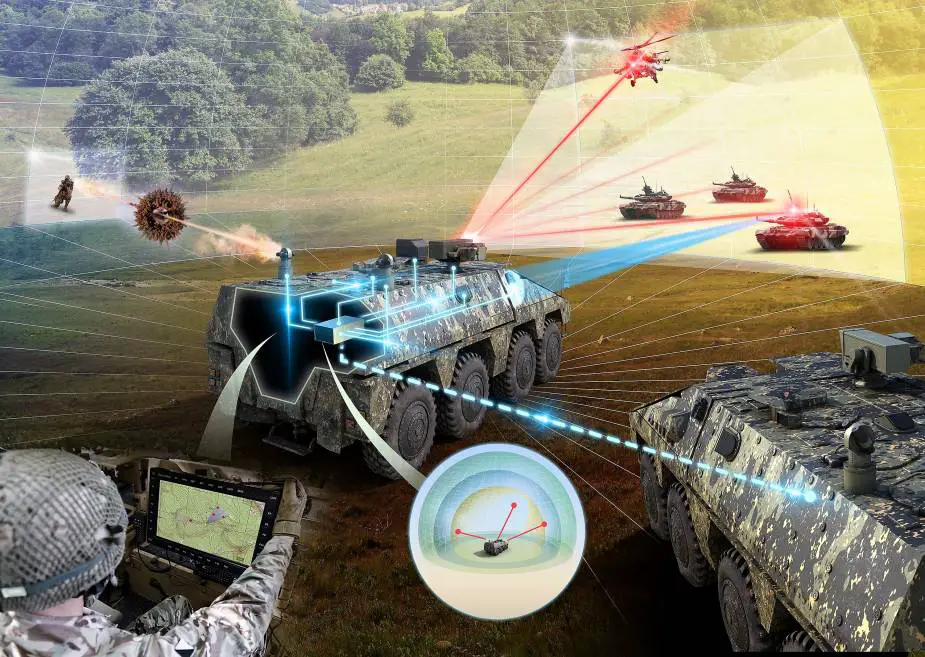UK Army MIPS armoured anti-missile vehicle system going to next level
The automated Modular Integrated Protection System (MIPS) classifies incoming enemy missiles, intercepts and destroys them. To do this, the ‘brain’ identifies what the incoming threat is and decides how best to defeat the object at precisely the right moment all in superfast time. The British Army explains its forthcoming system.
Follow Army Recognition on Google News at this link

A £15 million boost funded by the British Army over the next three years will enable the latest development phase of its cutting-edge anti-missile system which aims to keep soldiers safer inside armoured vehicles. (Picture source: British Army website)
British Minister for Defence Procurement, Alec Shelbrooke, said: “Our Armed Forces keep us safe around the clock and it’s incumbent upon us to do all we can to protect them and adapt to future threats. This is an important step forward in researching the latest technology to improve protection for armoured vehicles, helping them prevent and repel attacks from the ground and air.”
The programme will enable the UK to continue to develop future capabilities through to 2040. It will deliver improvements to:
• Sensors detecting threats across multiple frequencies combined with increasingly sophisticated ultra-fast signal processing
• Information processing, including complex multiple-source data analysis and artificial intelligence
• The cells which react to the detection of incoming guided and unguided threats
• Compact and affordable energy storage and motor drive technologies
• Technologies exploiting safety and security features being developed elsewhere for industrial robotic and autonomous systems
An advanced Active Protection System (APS) is critical to achieving operational advantage over our adversaries and is key in enabling the survivability of the Army’s fleet of vehicles.
Brigadier Mike Fayers, Head of Military Capability Plans - Army Futures, said: “The threats facing land capabilities continue to evolve, proliferate and diversify in their nature as we have seen most recently in the Ukraine. The project, working with science and technology community, industry and allies, will seek to integrate a range of sensors and effectors to defeat the threats of today and tomorrow, with a keen eye on rapidly exploiting this on to our next generations of land platforms.”
MIPS can be procured at pace, supported through its lifespan, and effectively integrated into mission systems. It will be delivered by the Defence Science and Technology Laboratory (Dstl) and follows on from the successful Icarus Technology Demonstrator Programme which developed MIPS to Technology Readiness Level (TRL) 5. The new investment will increase it to TRL 7.
DSTL’s Active Protection expert Tom Newbery said: “This is such an exciting opportunity for Dstl and Industry to work together to deliver a step change in vehicle survivability by taking MIPS to the next level of maturity. MIPS has the potential to open up a range of capability options for the Army, improving vehicle survivability against the most challenging threats now and in the future.”




























